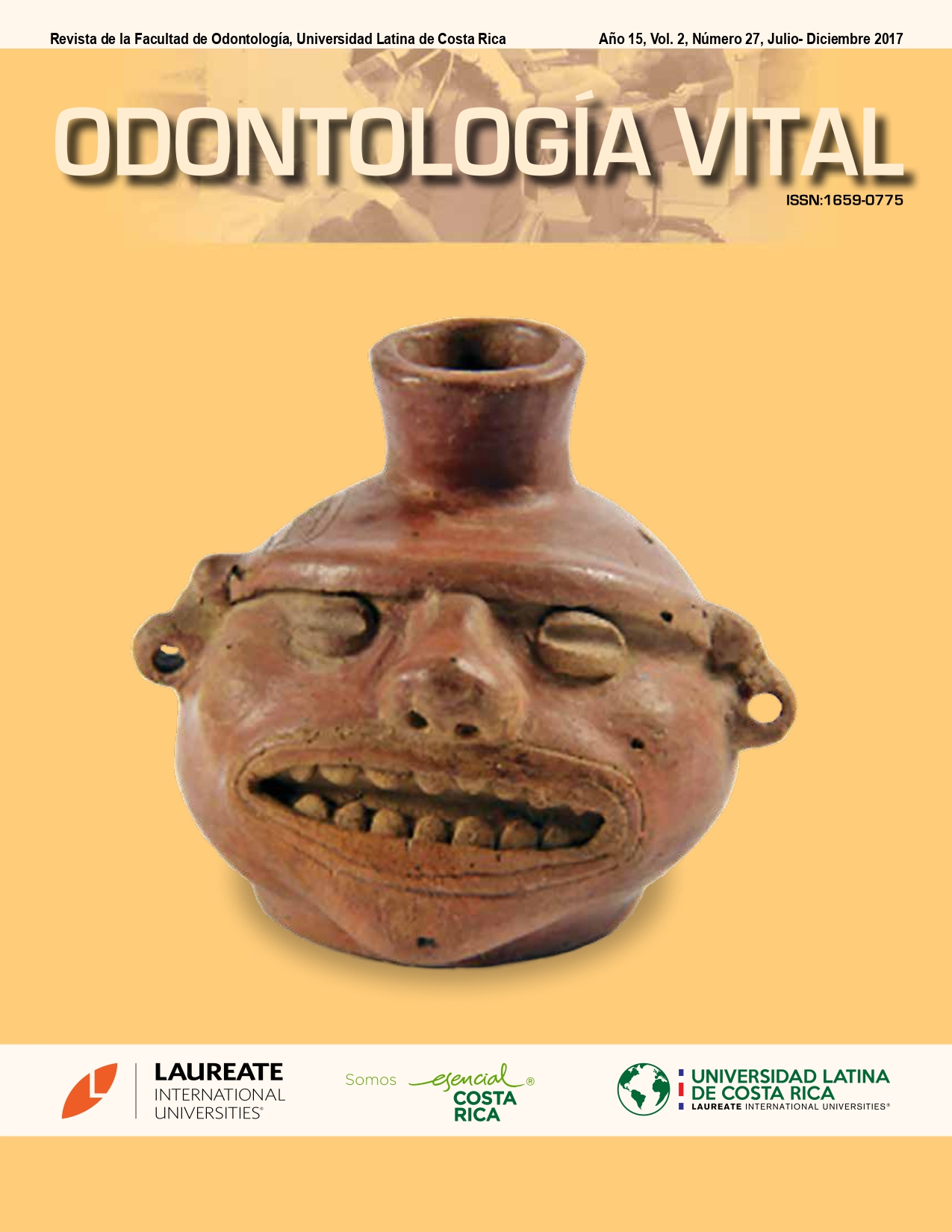Self-tie systems. Clinic case
DOI:
https://doi.org/10.59334/ROV.v2i27.212Keywords:
Class II, cross bite, moderated crowding, TrainerAbstract
Today, orthodontics plays a very important role in the lives of patients. There is many orthodontic systems market trying to orthodontic treatment faster, convenient and effective. The self ligating system will revolutionize orthodontics because it is a thought system patient comfort and reduce time reducing friction. The treatment time is a key factor, because it can provide stability post retention, even when there has been short. A 21 years old female patient is presented with a skeletal class II, hyperdivergent, molar and canine bilateral class I, anterior open bite, second right premolar in crossbite, canines outside arc, moderated upper crowding and light lower crowding. Deviated lower midline 0.5 mm to left, widespread enamel hipoplasia. Third molars absent. She underwent in alignment, leveling, stripping, detailing and retention treatment.
Downloads
References
Reincheneder, C., Baumert, U., Gedrange, T., Proffit, P., Faltermeier, A., Muessing, D. (2007) Friccional properties of aesthetic brackets. The European Journal of orthodontics 08/; 29 (4): 359-65. https://doi.org/10.1093/ejo/cjm033
Maen Zreaqat and Rozita Hassan (2011). Self-Ligating Brackets: An Overview, Principles in Contemporary Or-thodontics, Dr. Silvano Naretto (Ed.), ISBN: 978-953-307-687-4, InTech. https://doi.org/10.5772/20285
Harradine N, Birnie D. (1996) The clinical use of activa self ligating brackets AJODO;109:319-28. https://doi.org/10.1016/S0889-5406(96)70155-5
Sathler, R., Goncalves, R., Janson, G., Castello, N., Zanda, M. (2011) Demystifying self ligating brackets. Dental press J orthod. 16;2:50 1-8. https://doi.org/10.1590/S2176-94512011000200006
Prettymana, C., Bestb, A., Lindauerc, S., Tufekcid, E. (2012) Self-ligating vs conventional brackets as perceived by orthodontists. The Angle Orthodontist: November, Vol. 82, No. 6, pp. 1060-1066. https://doi.org/10.2319/101311-640.1
Eldin, N., Fayed, M., Eid, F., Mostafa, Y. (2015) Do self ligating bracket systems produce actual alveolar bone expan-sión?. IOSR-JDMS;14:8 45-53
Wilches, L., García, D., Quintero, L., De los Reyes, A., Aranza, M., Otero, L. (2014) Comparacion de la respuesta biológica generada por dos sistemas de brackets convencioinales y de autoligado. Univ odontol. ;33(70): 21-29.
Atik, E., Ciger, S. (2014) An assessment of conventional and self-ligating brackets in class I maxillary constriction patients. Angle Orthod.;84:615-622. https://doi.org/10.2319/093013-712.1
Orozco, A., Silva, R. (2011) Fuerza friccional en brackets de autoligado pasivo. Revista latinoamericana de orto-doncia y ortopedia. Abril. https://www.ortodoncia.ws
Rinchuse D, Miles P. (2007) Self ligating brackets: present and future. AJODO;132:216-22. https://doi.org/10.1016/j.ajodo.2006.06.018
Downloads
Published
Issue
Section
License
Copyright (c) 2017 Gema Esmeralda García López, Beatriz Gurrola Martínez, Adán Casasa A.

This work is licensed under a Creative Commons Attribution 4.0 International License.
Authors who publish with Odontología Vital agree to the following terms:
- Authors retain the copyright and grant Universidad Latina de Costa Rica the right of first publication, with the work simultaneously licensed under a Creative Commons Attribution 4.0 International license (CC BY 4.0) that allows others to share the work with an acknowledgement of the work's authorship and initial publication in this journal.
- Authors are able to enter into separate, additional contractual arrangements for the non-exclusive distribution of the Odontología Vital's published version of the work (e.g., post it to an institutional repository or publish it in a book), with an acknowledgement of its initial publication.
- Authors are permitted and encouraged to post their work online (e.g., in institutional repositories or on their website) prior to and during the submission process, as it can lead to productive exchanges, as well as earlier and greater citation of published work.







